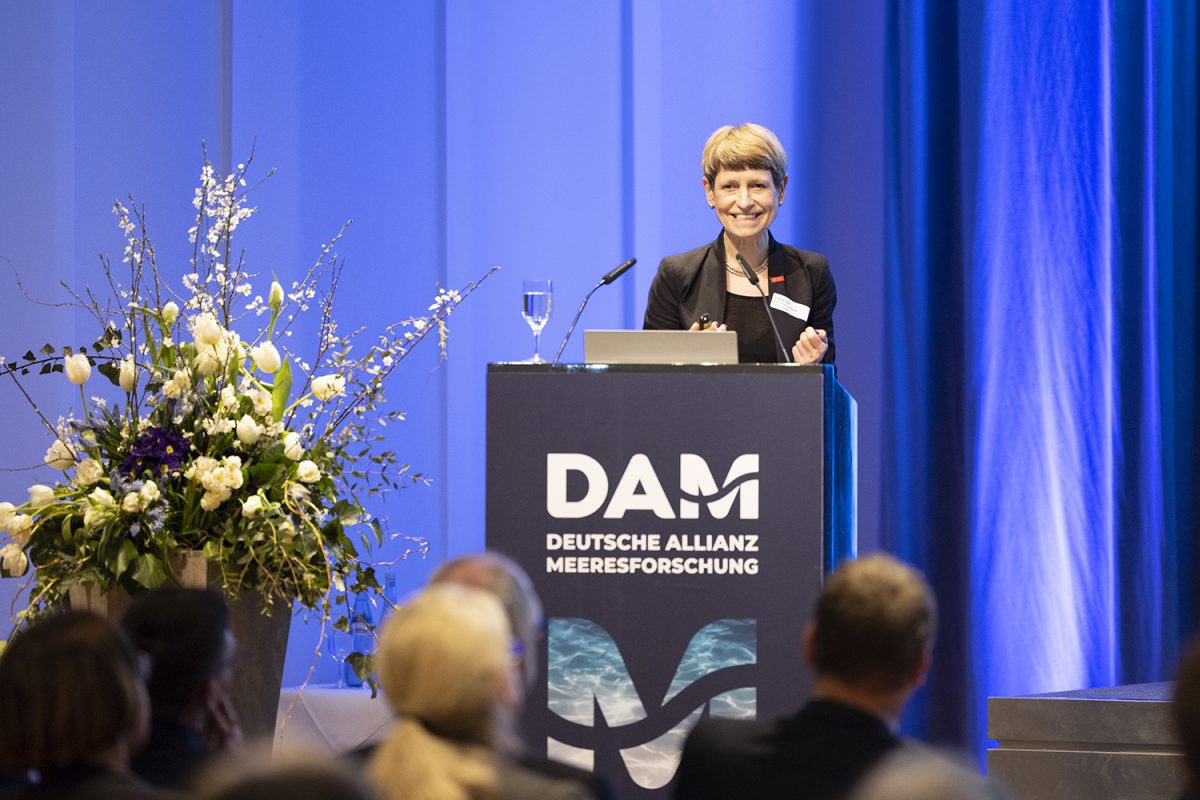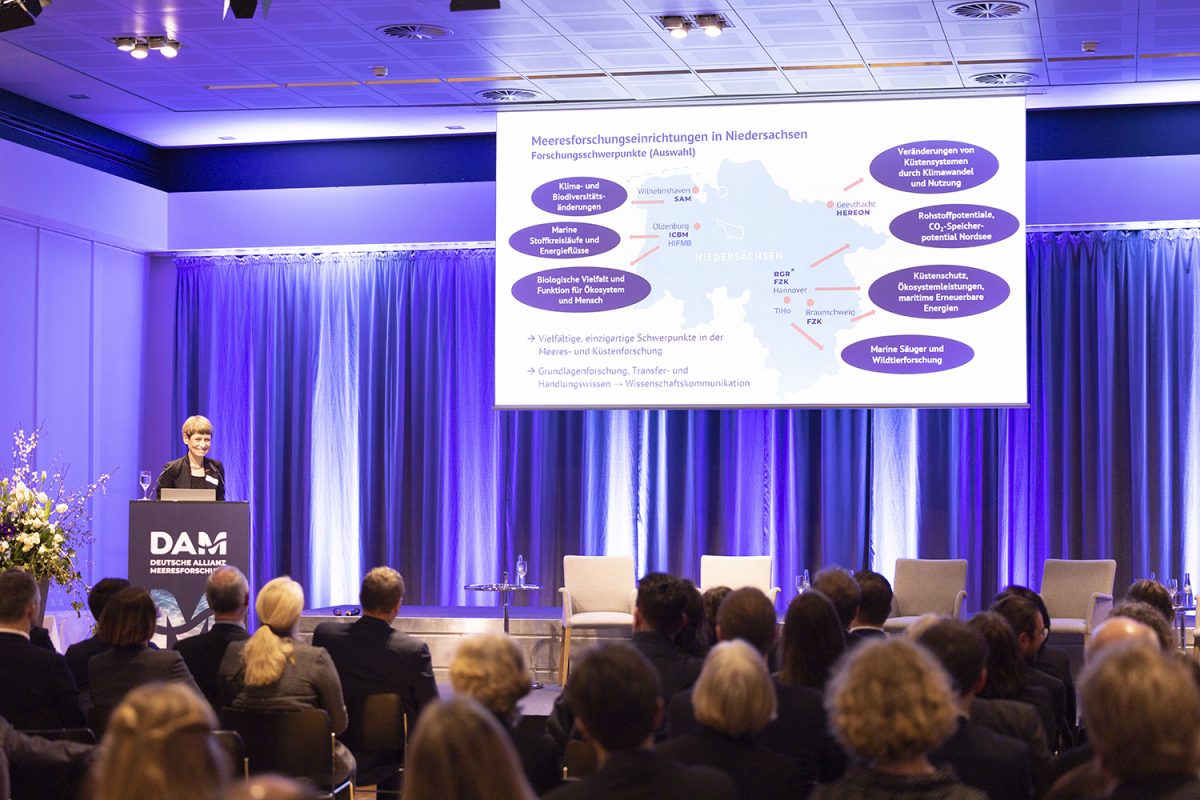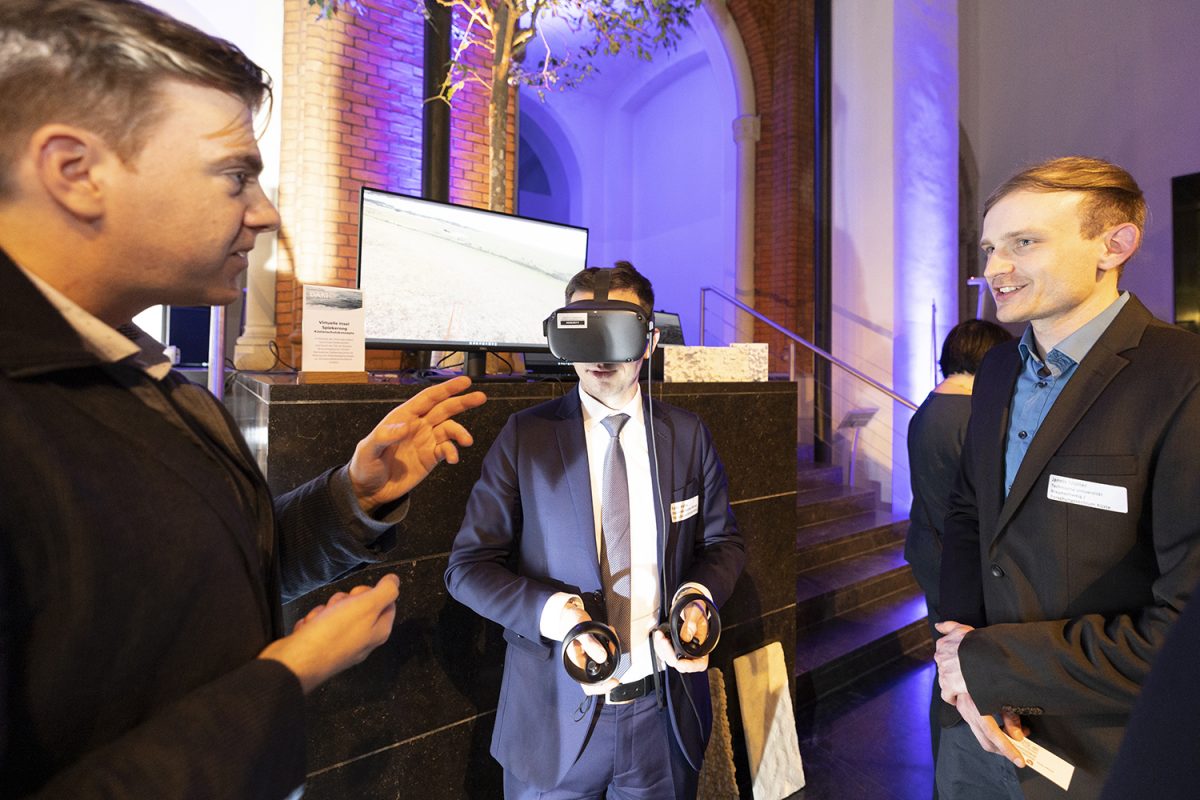Sea Future Parliamentary Evening of the German Marine Research Alliance
How can the North Sea be used for the expansion of renewable energy, but at the same time be protected as a maritime space? This conflict of interests was recently the focus of the Parliamentary Evening of the German Marine Research Alliance (DAM) in Hanover, as were the impacts of climate change on coastal protection. The DAM unites 23 leading German marine research institutions with the aim of strengthening the sustainable management of coasts, seas and the ocean. This also includes the Coastal Research Centre, a joint institution of Technische Universität Braunschweig and the Leibniz University Hannover.
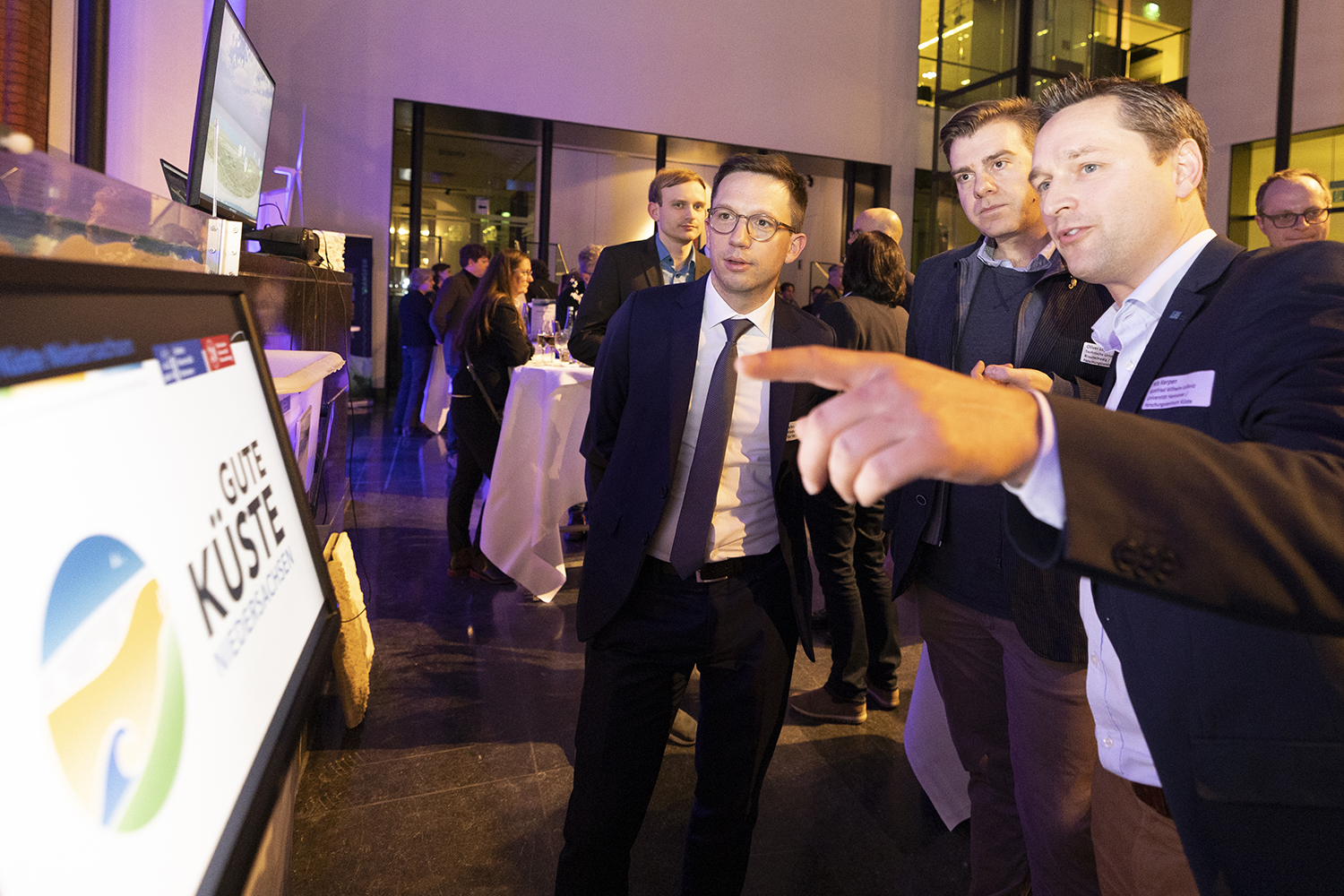
Lower Saxony’s Minister of Science was able to find out more about the “Gute Küste Niedersachsen“ (Good Coast Lower Saxony) project at the research exhibition. Photo credit: DAM/Sinje Hasheider
At the Parliamentary Evening in the Old Town Hall in Hanover, DAM gave members of the Lower Saxony Parliament and representatives from ministries, state companies and non-governmental organisations an insight into current research activities. The Lower Saxony Minister for Science and Culture, Falko Mohrs, and the Vice-President of the Lower Saxony State Parliament, Markus Bosse, clearly emphasised the interest of Lower Saxony’s politicians in DAM in their welcoming addresses, not least because of the longest coastline in German federal states, which is protected and populated in Lower Saxony.
As an interface between science and politics, the evening offered space for dialogue. It began with a keynote speech by Angela Ittel, President of TU Braunschweig, on coastal research under the umbrella of the Coastal Research Centre, a keynote address by Professor Helmut Hillebrand, Director of the Helmholtz Institute for Functional Marine Biodiversity, and a panel discussion on “Konflikte zwischen Schutz und Nutzung in der Nordsee – Energieversorgung, Küsten- und Naturschutz“ (Conflicts between protection and use in the North Sea – energy supply, coastal protection and nature conservation).
Between protection and use
In this conflict, the decided expansion of offshore wind energy as the primary energy source in the North Sea plays a decisive role. “Among other things, conflicts arise from installation,” explains Dr.-Ing. Oliver Lojek, a research associate at the Leichtweiß-Institute for Hydraulic Engineering and Water Resources (LWI) at TU Braunschweig. “In the process, the seabed is disturbed, micro-organisms lose their living environment in the near field and the food chain that builds on it is also punctured.” In addition, the construction of the plant would be associated with increased maritime traffic and construction noise due to the insertion into the seabed. The laying of the power line will also have an impact on the seabed.
Various research projects at TU Braunschweig and Leibniz University Hannover deal with topics related to wind turbines. For example, research into erosion depressions that can be caused by the turbines is part of a special research area in Hanover. In addition, the exposure of the turbines to the sandy North Sea causes the corrosion protection coating to wear off and remain in the sea. Research on this is being conducted in Braunschweig as part of the EU project Anemoi. On a large scale, the parks from several dozen turbines arranged in geometric patterns influence the tidal currents and the sea state as well as coupled transport processes under water. The effect is being studied in Hanover and Braunschweig in the DAM project CoastalFutures.
“With all the emerging conflicts, the expansion of offshore wind energy represents one of the indispensable pillars of the energy transition in Europe and thus has high social relevance,” Oliver Lojek emphasises. “Geopolitical dependencies quickly develop into problems that cause entire economies to totter – strengthening the need for energy self-sufficiency. In this, science is challenged to generate action knowledge in very short time windows of a few years to enable informed decisions for low-destruction and sustainable use concepts.”
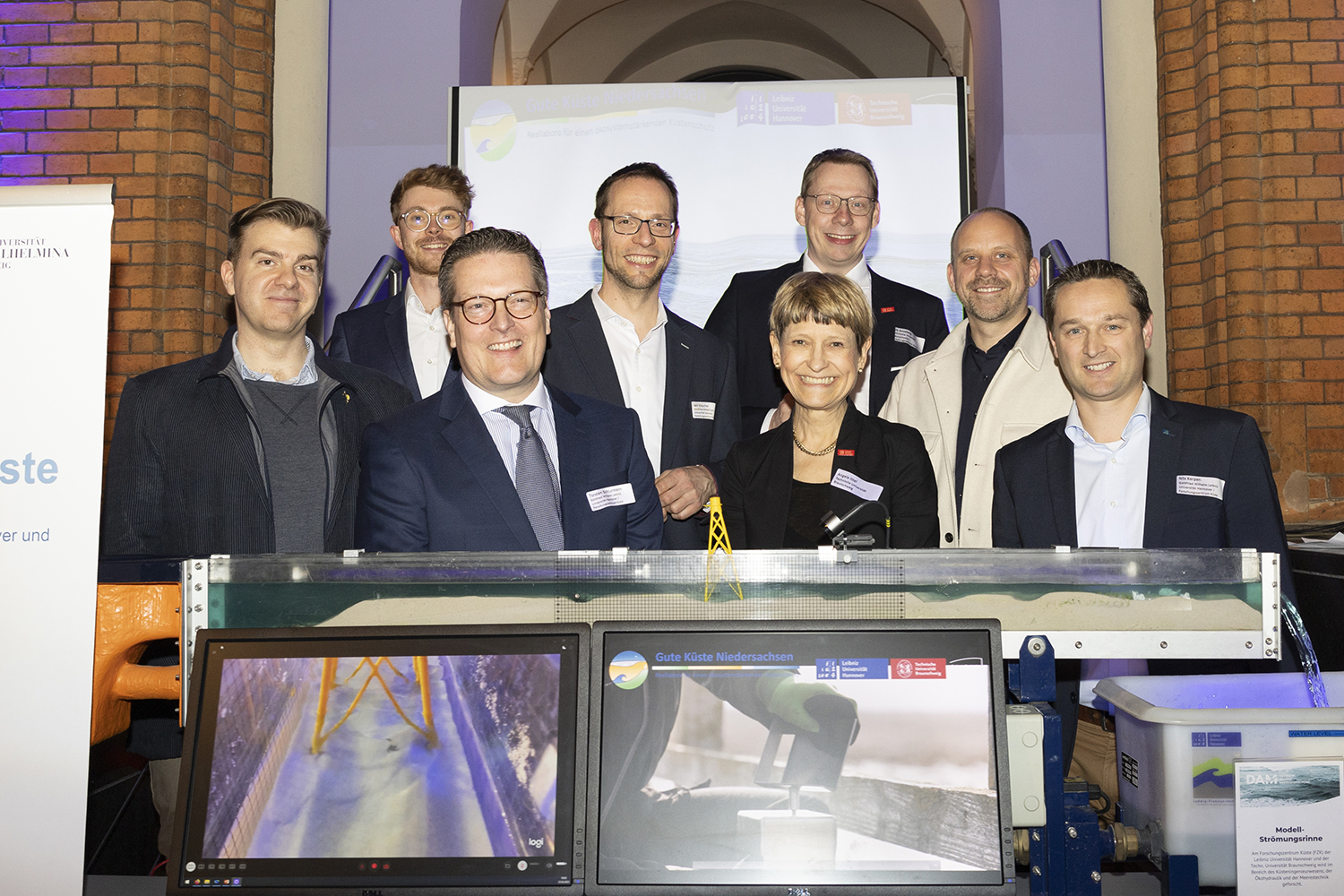
Scientists of the Coastal Research Centre with TU President Angela Ittel in front of exhibits of the research exhibition. Photo credit: DAM/Sinje Hasheider
Virtual island of Spiekeroog
In the panel discussion, Dr. Anne Rickmeyer (Lower Saxony State Agency for Water Management, Coastal and Nature Conservation), Prof. Dr. Corinna Schrum (Institute for Coastal Systems, Hereon) as well as Bettina Taylor (BUND Meeresbüro) and Prof. Torsten Schlurmann (LUH) presented different views and approaches to the emerging conflicts between protection and use of the North Sea. There was a lively discussion about the tension between energy supply and the current plans to build around 15,000 wind turbines in the North Sea by 2030.
The participants also got into conversation between the exhibits of the research exhibition. TU Braunschweig presented the virtual island of Spiekeroog. This was developed as part of the Promoting Digital Education through Global Interconnection (ProDiGI) funding programme of the Innovation in Higher Education Foundation in cooperation with the Institute for Computer Graphics and the LWI. In virtual reality, the island can be experienced in its current state as well as at different sea level scenarios. The VR technology is part of the digital teaching concept and is being used for the first time to transfer knowledge from the Spiekeroog real laboratory to the coastal engineering courses. “Students can use the VR technology to experience the challenges in coastal engineering using the example of the island of Spiekeroog and thus acquire current research results on sustainable coastal protection concepts as well as the background knowledge in a very vivid way,” explains Dr. David Schürenkamp from LWI.

